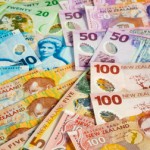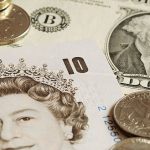The euro retreated from the strongest level in seven weeks against the US dollar, after preliminary data showed indexes of manufacturing and services were weaker than expected in February, fueling speculation the euro zone recovery may loose momentum.
EUR/USD hit a session low at 1.3686 at 08:25 GMT, after which consolidation followed at 1.3697, losing 0.27% for the day. Support was likely to be received at February 14th low, 1.3674, while resistance was to be met at February 19th high, 1.3774, also the pairs highest since January 2nd.
Euros demand was dampened after a series of overall downbeat reports added to signs the recovery in the common-currency area remains fragile and may even slow its pace in February.
The market research group, Markit Economics, reported today that its gauge of manufacturing activity in the euro area unexpectedly slipped to 53.0 this month, from 54.0 in January. Experts had projected the index to remain steady at 54.0. In addition, a separate report by the same market research group revealed that its services measure rose to 51.7 this month from 51.6 in January. However, analysts had estimated that the index will rise to 51.9. The composite index of Markit Economics also registered a decline to 52.7 in February from 52.9 a month ago.
In Germany, which is the largest economy in the euro zone, the manufacturing index declined to 54.7 this month, from 56.5 in January, while experts predicted a smaller decline to 56.3. However, the services index rose to 55.4 this month from 53.1 in January, outstripping analysts expectations for an increase to 53.4. The composite German index of Markit Economics also increased, reaching a 2-1/2-year high in February.
French manufacturing and services gauges also disappointed, with the latter dropping to the lowest level in nine months.
Although the economy of the 18-nation common currency area is forecast to post a full-year growth this year, for the first time in three years, the economic recovery seems fragile, as unemployment remains at “an unacceptably high levels” and the price pressure remains weak.
The unemployment rate in the euro area remained unchanged at 12% in December, after November’s reading has been revised down to 12.0% from 12.1% previously. The unemployment rate eased a bit from September’s high of 12.1%.
Inflation in the euro area sharply declined to an annualized pace of 0.7% in January, the weakest level in four years and after a 0.8% increase in the previous month. Analysts had estimated that consumer prices will increase by 0.9% in January. This was a fourth straight reading of inflation under 1%, which was referred to by ECB President Mario Draghi as a danger zone, adding to concerns over the threat of deflation in the region. The central bank attempts to maintain inflation at just below 2%.
Mario Draghi tries to guide the euro zone through fragile economic recovery as inflation remains at the lowest since 2009. For now, interventions are postponed at least March, when the central bank is going to publish its quarterly macro-economic forecasts, which will provide first inflation predictions for 2016. Previous forecasts have revealed that the ECB should take more decisive steps and should further ease its monetary policy.
Meanwhile, in the United States, a report by the Department of Commerce revealed yesterday that producer prices increased 0.2% in January, exceeding analysts’ expectations of a 0.1% gain and after rising 0.1% in the preceding month. In annual terms, the producer price index (PPI) advanced to 1.2% last month, in line with analysts’ forecasts, while December’s rate has been revised down to 1.1%.
Core producer prices, which exclude the volatile food and energy categories, rose 0.2% in January, outstripping analysts’ projections of a 0.1% gain, following another 0.3% increase during the previous month.
The index of consumer prices in the country probably rose 0.1% in January compared to December, according to the median estimate of experts, slowing down in comparison with a 0.2% gain in December compared to November. Annualized consumer price inflation probably reached 1.6% last month, after it was 1.5% in December. The official figures are expected to be released at 13:30 GMT. Faster than expected pace of inflation will certainly provide support to greenback’s demand.
At the same time, the minutes of Federal Reserve Bank’s policy meeting on January 28th-29th showed that several policy makers said in “the absence of an appreciable change in the economic outlook, there should be a clear presumption in favor” of continuing to pare back the central bank’s monthly monetary stimulus by 10 billion USD at each meeting.
As the rate of unemployment decreases at a faster than expected pace, even while other labor-market indicators signal weakness, bank’s policy makers agreed that it would “soon be appropriate” to revise their guidance about the time horizon of record-low borrowing costs.
Janet Yellen, in her first testimony to Congress as head of the Fed, said on February 11, the central bank will “likely reduce the pace of asset purchases in further measured steps at future meetings”, but also underscored that the recovery in the labor market in the US is “far from complete”. She also reiterated that the pace of cutting back Fed stimulus was not on a preset course.
The Federal Reserve announced in December that it will pare monthly bond-buying purchases by $10 billion, after which it decided on another reduction of the same size at the meeting on policy in January, underscoring that labor market indicators, which “were mixed but on balance showed further improvement”, while nation’s economic growth has “picked up in recent quarters.”
The central bank will probably continue to pare stimulus by $10 billion at each policy meeting before exiting the program in December, according to a Bloomberg News survey of 41 economists, conducted on January 10th.
Elsewhere, USD/JPY touched a session low at 101.67 at 08:18 GMT, after which consolidation followed at 101.79, losing 0.51% for the day. Support was likely to be found at February 17th low, 101.39, while resistance was to be encountered at February 19th high, 102.47.





